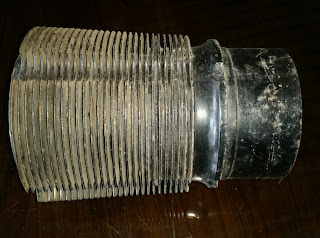Cylinder Head
Cylinder head provides a place for combustion of the fuel/air mixture and to give the cylinder more heat conductivity for adequate cooling. The fuel/air mixture is ignited by the spark in the combustion chamber and commences burning as the piston travels toward TDC on the compression stroke. The ignited charge is rapidly expanding at this time, and pressure is increasing so that, as the piston travels through the TDC position, it is driven downward on the power stroke.
The intake and exhaust valve ports are located in the cylinder head along with the spark plugs and the intake and exhaust valve actuating mechanisms.
After the cylinder head is cast, the spark plug bushings, valve guides, rocker arm bushings, and valve seats are installed in the cylinder head. Spark plug openings may be fitted with
bronze or steel bushings that are shrunk and screwed into the openings. Stainless steel Heli-Coil spark plug inserts are used in many engines currently manufactured. Bronze or steel valve guides are usually shrunk or screwed into drilled
openings in the cylinder head to provide guides for the valve stems. These are generally located at an angle to the center line of the cylinder.
Valve seats are circular rings of hardened metal that protect the relatively soft metal of the
cylinder head from the hammering action of the valves (as they open and close) and from the exhaust gases.
Cylinder heads of air cooled engines are subjected to extreme temperatures; it is therefore necessary to provide adequate cooling fin area and to use metals that conduct heat rapidly.
Cylinder heads of air cooled engines are usually cast or forged. Aluminum alloy is used in the construction for a number of reasons. The greatest improvement in air cooling has resulted from reducing the thickness of the fins and increasing their depth. In this way, the fin area has been increased in modern engines. Cooling fins taper from 0.090" at the base to 0.060" at the tip end. Because of the difference in temperature in the various sections of the cylinder head, it is necessary to provide more cooling-fin area on some sections than on
others. The exhaust valve region is the hottest part of the internal surface; therefore, more fin area is provided around the outside of the cylinder in this section.



Comments
Post a Comment